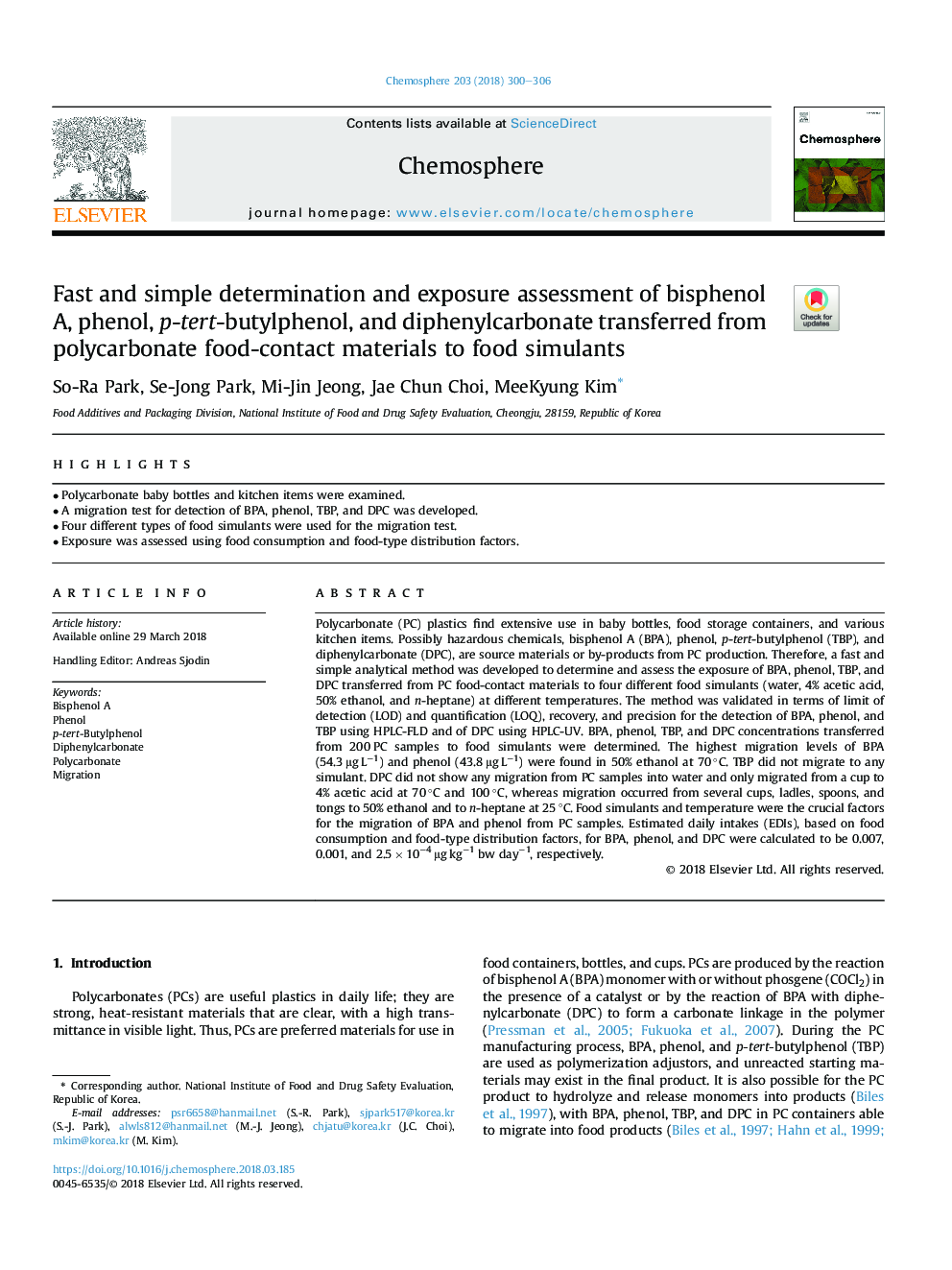| Article ID | Journal | Published Year | Pages | File Type |
|---|---|---|---|---|
| 8851268 | Chemosphere | 2018 | 7 Pages |
Abstract
Polycarbonate (PC) plastics find extensive use in baby bottles, food storage containers, and various kitchen items. Possibly hazardous chemicals, bisphenol A (BPA), phenol, p-tert-butylphenol (TBP), and diphenylcarbonate (DPC), are source materials or by-products from PC production. Therefore, a fast and simple analytical method was developed to determine and assess the exposure of BPA, phenol, TBP, and DPC transferred from PC food-contact materials to four different food simulants (water, 4% acetic acid, 50% ethanol, and n-heptane) at different temperatures. The method was validated in terms of limit of detection (LOD) and quantification (LOQ), recovery, and precision for the detection of BPA, phenol, and TBP using HPLC-FLD and of DPC using HPLC-UV. BPA, phenol, TBP, and DPC concentrations transferred from 200â¯PC samples to food simulants were determined. The highest migration levels of BPA (54.3â¯Î¼gâ¯Lâ1) and phenol (43.8â¯Î¼gâ¯Lâ1) were found in 50% ethanol at 70â¯Â°C. TBP did not migrate to any simulant. DPC did not show any migration from PC samples into water and only migrated from a cup to 4% acetic acid at 70â¯Â°C and 100â¯Â°C, whereas migration occurred from several cups, ladles, spoons, and tongs to 50% ethanol and to n-heptane at 25â¯Â°C. Food simulants and temperature were the crucial factors for the migration of BPA and phenol from PC samples. Estimated daily intakes (EDIs), based on food consumption and food-type distribution factors, for BPA, phenol, and DPC were calculated to be 0.007, 0.001, and 2.5â¯Ãâ¯10â4â¯Î¼gâ¯kgâ1 bw dayâ1, respectively.
Related Topics
Life Sciences
Environmental Science
Environmental Chemistry
Authors
So-Ra Park, Se-Jong Park, Mi-Jin Jeong, Jae Chun Choi, MeeKyung Kim,
